Note: this is Part Two of a two-part series looking at the rapid pace of oil and gas development in Weld County in 2014. Click here to read Part One: Will Voters Kill Colorado’s Golden Goose?
2013 was a record year for oil production in Colorado: 64 million barrels were produced in the state. Weld County extracted 52 million of those barrels, according to the Colorado Oil and Gas Conservation Commission, and represented more than 80% of Colorado’s total production (and its severance tax revenue).
Horizontal drilling and multi-stage hydraulic fracturing are drawing billions of dollars in new investment to Weld County. It’s northern Colorado’s golden ticket to the shale boom. Weld is home to the Wattenberg Field, and the people living there are reaping the benefits of robust economic activity in the county.
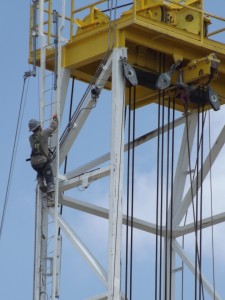 The key to economically produce energy from the region requires drilling a well horizontally for up to two miles in a layer of shale and pump sand into the formation. The high pressure from the sand creates tiny fractures in the rock 6,000-8,000 feet below surface. Without creating the fractures that allow hydrocarbons to escape from the impervious rock, oil and gas can’t be produced from the formation. Artificial stimulation allows the trapped oil and gas to escape. It can then be pumped to the surface, gathered and sold. Royalties and taxes are paid. Salaries are paid. Weld County prospers.
The key to economically produce energy from the region requires drilling a well horizontally for up to two miles in a layer of shale and pump sand into the formation. The high pressure from the sand creates tiny fractures in the rock 6,000-8,000 feet below surface. Without creating the fractures that allow hydrocarbons to escape from the impervious rock, oil and gas can’t be produced from the formation. Artificial stimulation allows the trapped oil and gas to escape. It can then be pumped to the surface, gathered and sold. Royalties and taxes are paid. Salaries are paid. Weld County prospers.
Rigs, Pump Jacks Not New to Weld: Eight Decades of Oil & Gas Development
Oil and gas development is nothing new to Weld County. It started decades before most of today’s residents and business owners were born. Oil was discovered in Weld County in 1930, launching 84 years of oil and gas exploration and production activities. The Wattenberg Field was discovered in 1970, and oil and gas production has continued in Weld County for 40 more years. “Then, in 2009, a horizontally drilled well (the Jake well) surprised the oil industry by producing 50,000 barrels of oil in 90 days,” the Discover Weld County Web site reminisces.
“The traditional view of the Niobrara as a tight reservoir all changed with the drilling of JAKE #2-01H by EOG Resources Inc. in the October 2009. This strike set off the Niobrara oil play. This well’s Initial Production (IP) figures were astounding, 1,558 barrels of oil equivalent per day and an average of 555 barrels oil per day over its first 90 days. JAKE #2-01H was horizontally drilled into the Niobrara and then fractured,” according to a report in Niobrara News.
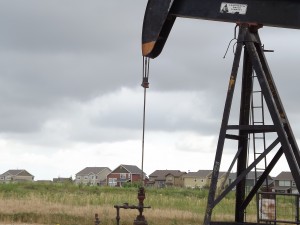 Five years later, Weld County is awash again in energy development, and evidence that the county has sustained eight decades of oil and gas development is virtually everywhere you look.
Five years later, Weld County is awash again in energy development, and evidence that the county has sustained eight decades of oil and gas development is virtually everywhere you look.
Northern Colorado is home to operators like Anadarko Petroleum (ticker: APC), Noble Energy (ticker: NBL), EnCana (ticker: ECA), PDC Energy (ticker: PDCE), Petro-Canada/Suncor (tickers: PCZ/SU-merged), Samson Oil & Gas (ticker: SSN), EOG Resources (ticker: EOG), Bonanza Creek Energy (ticker: BCEI), Synergy Resources (ticker: SYRG), Chesapeake Energy (ticker: CHK) and Whiting Petroleum (ticker: WLL).
These companies and others have invested billions of dollars leasing minerals, drilling wells and developing infrastructure to generate new production from the already prolific Wattenberg Field in Weld County.
Anadarko operates more than 5,200 wells in the Wattenberg Field. It drilled 335 horizontal wells in 2013, generating a 21% jump in sales volume from the field. Anadarko has identified another 4,000 potential drilling locations in the Niobrara and Codell formations of the Wattenberg, according to a summary by Forbes.
“Our Wattenberg horizontal program significantly prolonged the life of a field that has been producing for more than 40 years,” John Ford, manager of the Wattenberg program for Anadarko, told the Greeley Tribune. “It’s astonishing that technology can continue to enhance the value of oil and natural gas basins throughout the United States, and in the case of the Wattenberg, deliver a billion-barrel-plus field, well into its productive life.” Noble and Anadarko have announced plans to drill more than 800 wells combined in the Wattenberg Field in 2014.
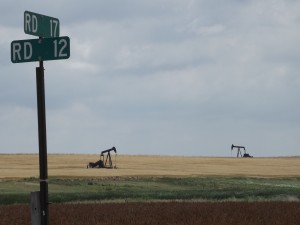 A New Class of Oilfield Worker and a Custom Menu to Go With
A New Class of Oilfield Worker and a Custom Menu to Go With
Penny Salazar is mayor pro tem of Platteville. She also owns and runs Suzanne’s Small Town Café whose slogan is, Where you’re only a stranger once. Penny told Oil and Gas 360® she serves a lot of oilfield company employees during the week. She makes sure the menu at Suzanne’s caters to the workers, many of whom have come to Weld County from all over the country. Suzanne’s offers a lot of one-of-a-kind items. In addition to staples like grits, chicken fried steak, chicken fried chicken and Mexican dishes, you can order “The Penny Stacker” and “Reno’s Beans and Eggs” along with about 40 other items. One off-menu item is known by local patrons as “The Fracing Big Burger.” It is a custom designed hamburger “that was requested by the guys at Calfrac [ticker: CFW],” Penny said. “They named it.” The Fracing Big Burger is a combination of meat patties, eggs, bacon, peanut butter and a lot of other ingredients.
Penny says today’s oil and gas boom is populated by a new class of oil field worker: “The workers in the ‘70s and ‘80s were very young. Some were only 16 or 17 and lied about their age to get on a crew. Drugs were an issue back then. The workers I see today are more mature. The companies are all about safety and drug testing; I hear them talking about it. The companies make sure their workers get time off and they get to go home. The man camps of the ‘70s are gone. And the companies operating here bend over backwards to be good neighbors.”
Good Neighbors: Drilling Quietly, Building Sound Walls, Monitoring Wells with Infrared Technology
Operators like Synergy Resources know how to get along with residential neighbors in the Wattenberg. Its management selects specific drilling rigs and completion methods for minimum impact on residents in the area.
“We’re [drilling] right in the middle of the city of Greeley, and we want to get in and get out,” said Craig Rasmuson, Synergy’s Chief Operating Officer, during the company’s recent third quarter conference call. Rasmuson was responding to an analyst’s question about the company’s choice to use “sliding sleeves” versus “plug and perf” completion methodology in a particular drilling location.
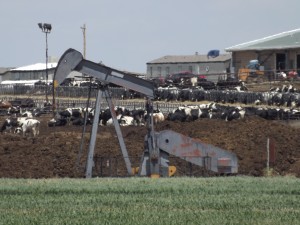 “With the sliding sleeves, we can get those jobs done in less than two days each. So, we’ll be off the location within 8 or 10 days of rig and staging up, if you will,” Rasmuson said. “And [since we’re] within 1,000 feet there, we probably would impact hundreds and hundreds and hundreds of people’s sleep habits with 24/7 fracing. The ADR (automated drilling rig) natural gas rigs that we drill with are extremely quiet, and we’ve got the sound wall that has done a great job for us. [It’s] a 30-foot temporary wall that we had constructed by one of the service companies here. We didn’t get one complaint during our two months of drilling.”
“With the sliding sleeves, we can get those jobs done in less than two days each. So, we’ll be off the location within 8 or 10 days of rig and staging up, if you will,” Rasmuson said. “And [since we’re] within 1,000 feet there, we probably would impact hundreds and hundreds and hundreds of people’s sleep habits with 24/7 fracing. The ADR (automated drilling rig) natural gas rigs that we drill with are extremely quiet, and we’ve got the sound wall that has done a great job for us. [It’s] a 30-foot temporary wall that we had constructed by one of the service companies here. We didn’t get one complaint during our two months of drilling.”
Discussing the Colorado air emission standards with analysts, Rasmuson said: “We’ve had to increase our environmental group that we’ve hired to overview and oversee that whole program. That’s a substantial cost … . It’s not a requirement, but we’re being very, very proactive to be ahead of what needs to be done in each well site. If we’re inside city limits, we have an outside third party out there at every single well site, every 30 days, making sure that we have no emissions that are coming from those wells. We purchased the FLIR camera ourselves, a $100,000 camera, to go out there. You scan [with] the camera to see if there are any emissions coming off those wells. We’re doing these things on a proactive basis to make sure that we’re ahead of any requirements and any issues that could possibly come up with the wells themselves.”
House Came with a Pump Jack Next Door: “We Kind of Like It”
Homebuilders have been creating new subdivisions in and beside active oil and gas areas in Weld County. When a new homeowner unpacks his boxes, sweeps the back deck, looks over his fence and suddenly discovers that his brand new house is adjacent to an operational oil and gas site, it can lead to some interesting interactions.
Just part of the neighborhood
Oil and Gas 360® had the opportunity to talk to a new Weld County homeowner who climbed over his fence, and ran over to a working pump jack and asked, “are you with the company?”
OAG360®: Is there a problem with this equipment?
WELD COUNTY HOMEOWNER: No, what happened was my neighbor and I complained about the weeds in this field and so the company sent someone out who cut them down a couple of weeks ago, but they didn’t cut all of the weeds in this field. I was hoping we could ask you to get them to cut down the rest of the weeds.
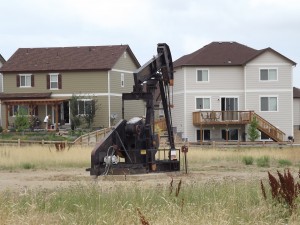 OAG360®: What about this unit—does it bother you?
OAG360®: What about this unit—does it bother you?
HOMEOWNER: When we first moved in a year ago I was worried that it was going to be loud or objectionable, but it’s very quiet. Now we don’t even notice it. I run my dogs over in this field; we kind of like it.
Good Neighbors or Not, Will Colorado Voters Stop Shale Development in Weld County?
Penny Salazar said she has a couple of customers at the restaurant who are anti-fracing. But most people in rural Weld County are seeing the economic prosperity resulting from the wide spread energy development activities in the county—jobs, construction of new homes and commercial buildings, new businesses opening, a county government free of debt, service upgrades in the county, no sales tax and lower property taxes than nearby counties.
Colorado’s Governor has been vocal about the setback increase idea that certain groups are seeking to get on the November ballot. “The reality is that if we get into a constitutional amendment in terms of 1,500-foot setbacks, the state is at a tremendous risk,” Governor Hickenlooper told the Denver Post. There are so many little homes on little ranchettes that a 1,500-foot setback would eliminate almost 60 percent of the drilling locations, the governor said. “The reason we’re in this situation is because when you ask people if 1,500-foot setbacks make sense, they say, ‘Yes’.”
Like the governor, the industry believes that a statewide blanket setback rule that triples or quadruples the current mandate of 500 feet could result in slowing or stopping the influx of capital into the Wattenberg Field and Colorado.
Two Remaining Ballot Proposals Could End Weld County’s Shale Boom
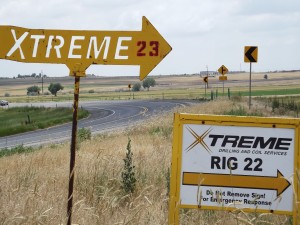 In late March, there were ten citizen ballot initiatives up for consideration that proposed new limits or regulations on oil and gas operations. Two still remain and are gathering signatures.Coloradans for Safe and Clean Energy told the Denver Business Journal last week that it had collected about 42,000 signatures on each of the two proposals and that their poll of 600 likely voters indicated the two initiatives had a 64 percent approval rating.
In late March, there were ten citizen ballot initiatives up for consideration that proposed new limits or regulations on oil and gas operations. Two still remain and are gathering signatures.Coloradans for Safe and Clean Energy told the Denver Business Journal last week that it had collected about 42,000 signatures on each of the two proposals and that their poll of 600 likely voters indicated the two initiatives had a 64 percent approval rating.
“Supporters of initiatives need to file more than 86,000 signatures by Aug. 4 with the Colorado Secretary of State’s office in order to make the fall ballot. Campaign experts say ballot proposals typically need thousands more signatures as a cushion because many signatures are tossed out during the state’s review process,” according to the Denver Business Journal.
Initiative 88 would increase setback for drill rigs to 2,000 feet from the current state-mandated 500 feet. Initiative 89 would add an environmental bill of rights to the Colorado constitution.
Oil and gas operators in Weld County are not pressing the brakes when it comes to lining up drill sites. Synergy Resources is making contingency plans in the event the 2,000 foot setback rule passes. Synergy has purchased drill pad sites, “one being a 90-acre farm, another one being a 35-acre [farm]. We know we’ve got some [upcoming] issues. We’re going out, finding that real estate and purchasing it,” said Craig Rasmuson, Synergy Resources’ COO, in the company’s recent third quarter conference call.
Alternative routes, as suggested, can be made. However, the passing of either initiative would almost certainly restrict the shale surge in one of America’s booming oil towns.
[sam_ad id=”32″ codes=”true”]
Important disclosures: The information provided herein is believed to be reliable; however, EnerCom, Inc. makes no representation or warranty as to its completeness or accuracy. EnerCom’s conclusions are based upon information gathered from sources deemed to be reliable. This note is not intended as an offer or solicitation for the purchase or sale of any security or financial instrument of any company mentioned in this note. This note was prepared for general circulation and does not provide investment recommendations specific to individual investors. All readers of the note must make their own investment decisions based upon their specific investment objectives and financial situation utilizing their own financial advisors as they deem necessary. Investors should consider a company’s entire financial and operational structure in making any investment decisions. Past performance of any company discussed in this note should not be taken as an indication or guarantee of future results. EnerCom is a multi-disciplined management consulting services firm that regularly intends to seek business, or currently may be undertaking business, with companies covered on Oil & Gas 360®, and thereby seeks to receive compensation from these companies for its services. In addition, EnerCom, or its principals or employees, may have an economic interest in any of these companies. As a result, readers of EnerCom’s Oil & Gas 360® should be aware that the firm may have a conflict of interest that could affect the objectivity of this note. The company or companies covered in this note did not review the note prior to publication. EnerCom, or its principals or employees, may have an economic interest in any of the companies covered in this report or on Oil & Gas 360®. As a result, readers of EnerCom’s reports or Oil & Gas 360® should be aware that the firm may have a conflict of interest that could affect the objectivity of this report.

